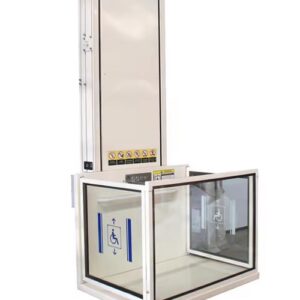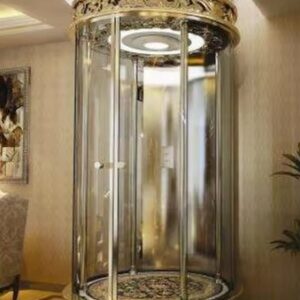Vertical Lift Elevator
A vertical lift elevator is a reliable and efficient solution for moving people or goods between different floors. It is commonly used in residential, commercial, and industrial buildings to enhance accessibility and convenience. With advanced safety features and smooth operation, it ensures a comfortable and secure transportation experience.
Product Description
Vertical Lift Elevator
A vertical lift elevator is a crucial transportation system designed to move people and goods between different floors efficiently. It is widely used in residential, commercial, and industrial settings, providing easy accessibility and enhancing convenience. These elevators offer a safe, smooth, and comfortable experience, making them essential for modern buildings. With advancements in technology, vertical lift elevators have become more efficient, energy-saving, and adaptable to various structures. Whether in a home, office, shopping mall, or factory, they provide seamless movement and improve the overall functionality of a space.
Importance of Vertical Lift Elevators
The primary role of a vertical lift elevator is to make movement between floors easier and more convenient. In residential buildings, they are particularly beneficial for elderly individuals and people with mobility challenges who may find staircases difficult to use. In commercial buildings, such as offices, hotels, and shopping malls, they improve accessibility for customers and employees, ensuring a better user experience. Industrial buildings use these elevators to transport heavy equipment and goods efficiently, reducing manual labor and increasing productivity.
Vertical lift elevators also play a key role in modern architectural designs. They not only enhance accessibility but also add value to a property. Many buildings now integrate stylish and technologically advanced elevators to match contemporary aesthetics. The availability of different sizes, designs, and functionalities allows property owners to choose an elevator that best fits their space and requirements.
Types of Vertical Lift Elevators
There are different types of vertical lift elevators, each designed for specific uses. Hydraulic elevators operate using fluid pressure and are ideal for low to mid-rise buildings. They offer a smooth and quiet experience, making them suitable for residential and commercial spaces. Traction elevators work with a system of cables and counterweights, making them more energy-efficient and perfect for high-rise buildings. Pneumatic elevators use air pressure for movement, offering a modern and space-saving solution for homes and small buildings.
Key Features of Vertical Lift Elevators
Modern vertical lift elevators come with advanced features that enhance their functionality, safety, and efficiency. Safety mechanisms such as emergency brakes, automatic door systems, and overload sensors ensure secure operation. Many elevators include smooth acceleration and deceleration to prevent sudden jerks, making them more comfortable for users.
Customization options allow property owners to select from various cabin sizes, materials, and designs that complement their building aesthetics. Some advanced models come with smart technology, including voice-activated controls, touchscreen panels, and energy-efficient LED lighting. These features enhance user experience while reducing power consumption.
Installation and Maintenance
Proper installation of a vertical lift elevator requires professional expertise. Factors such as available space, weight capacity, and building structure must be considered to ensure optimal performance. A well-installed elevator not only enhances efficiency but also complies with safety regulations.
Regular maintenance is essential for keeping an elevator in top condition. Routine inspections, lubrication of mechanical parts, and checking of electrical components help prevent unexpected breakdowns. Many manufacturers and service providers offer maintenance contracts to ensure continued reliable operation.













Reviews
There are no reviews yet.